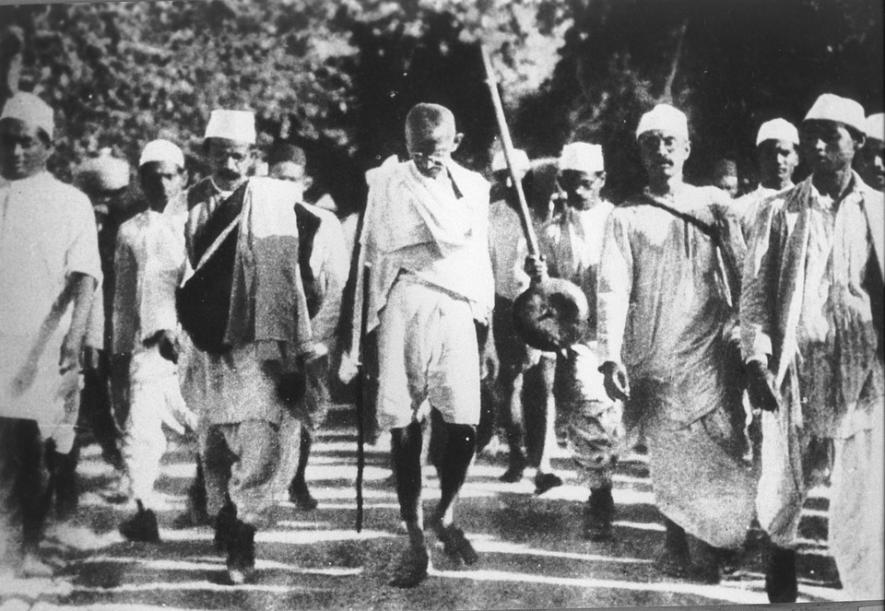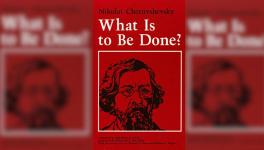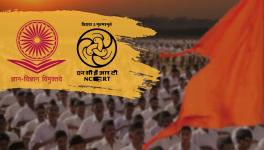Why Gandhi Does Not Deserve to be Defaced

The ghost of racial discrimination has come to haunt the land of opportunities once again with the infamous killing of George Floyd by Minneapolis Police officer Derek Chauvin. Americans are out in the streets as the world, including India, watches. Discrimination is a deep-rooted part of Indian socio-political life, and it should come as no surprise that #BlackLivesMatters is being supplemented here on social media with hashtags such as #DalitLivesMatters, #MuslimsLivesMatters and so on.
That said, the movement took an interesting turn in America when protesters in Washington DC defaced the statue of Mahatma Gandhi at the Indian embassy. A probe has been launched by the United States Park Police and the United States Ambassador to India, Kenneth Juster, has condemned the incident, saying he is appalled by the awful violence and vandalism. This incident has rekindled the debate about the Mahatma’s stand on racial discrimination.
The debate first started in 2015 with the publication of a book by Ashwin Desai and Goolam Vahed, The South African Gandhi: Stretcher-Bearer of Empire. The book delves into the life of Gandhi during his years in South Africa and concludes that he was always loyal to the Empire and helped it crush rebellions by the indigenous people. A violent response followed the publication of the book and a group bearing “Racist Gandhi must fall” placards and hurling racist taunts threw buckets of white paint at his statue in Johannesburg in April 2015. Articles were written and an enthusiast bunch of columnists, journalists and activists appeared in newspapers and on TV screens with a eureka moment kind of gung-ho. The sledging has been on since then and the incident in Washington is only one recent addition to it.
Is it a Eureka moment at all?
To start with, the conclusions drawn in Desai and Vahed’s book are not a new discovery. Any serious reader of Gandhi is well aware of these facts about him, even without the “well-researched” details thrown in. For example, consider the Boer War. Gandhi clearly mentions in his autobiography, The Story of My Experiments With Truth:
“When the war was declared, my personal sympathies were all with the Boers but I believed then that I had yet no right in such cases to enforce my individual convictions… Suffice it to say that my loyalty to the British rule drove me to participation with the British in that war. I felt that, if I demanded rights as a British citizen, it was also my duty, as such, to participate in the defence of the British Empire. I held then that India could achieve her complete emancipation only within and through the British Empire. So I collected together as many comrades as possible, and with very great difficulty got their services accepted as an ambulance corps.” [Chapter 10, Part 3, My Experiments With Truth .]
In chapter 6 of Part 2 of the same book, Gandhi admits, “Not that I was unaware of the defects in British rule, but…I believed British Rule was, on the whole, beneficial for the world.”
Gandhi wrote an elaborate chapter on this war in one of his earlier published works, Satyagrah in South Africa. The Boers were Dutch, not Black, but Gandhi participated against them in a war with the British out of a sense of loyalty, which he unhesitatingly accepts in his autobiography.
Similarly, he notes that during the Zulu Rebellion he “...bore no grudge against the Zulus, they had harmed no Indian… But I then believed that the British Empire existed for the welfare of the world. A genuine sense of loyalty prevented me from even wishing ill to the Empire. The rightness or otherwise of the “rebellion” was therefore not likely to affect my decision.”
He ends this section with the following words: “...we had to follow on foot with our stretchers on our shoulders. Twice or thrice, we had to march forty miles a day. But wherever we went, I am thankful that we had God’s good work to do, having to carry to the camp on our stretchers those Zulu friends who had been inadvertently wounded, and to attend upon them as nurses.”
It is from here that the term “stretcher-bearer” in the title of the 2015 book has been taken, and turned into a derogatory remark, which also makes for an eye-catching title.
But did we really need research to prove Gandhi’s loyalty towards the Empire?
Gandhi’s contempt for the “Negros”, as they were called during those days, is no secret. In chapter 20 of Satyagrah in South Africa he writes, “...we asked for some such exercise as drill, as we had observed even the Negro prisoners with hard labour being drilled in addition to their usual work.” There are many such sentences in this work, which was first published in 1926. Gandhi’s book is laden with Indian and European names, but one hardly finds him use any proper names for the indigenous people.
While the British were treating the Blacks and the Indians alike—both under the category of Black—Gandhi, as the leader of Indians in South Africa, was bargaining not for equal status, but a respectful one that is better than how the Blacks were treated. One can recall that his first noticeable Satyagrah experiment was against the “Black Law” which required Indians to give their thumb impressions and carry an identity card whenever they went out in public. Gandhi was in fact competing with the Black South Africans for better treatment. He was demonstrating his loyalty towards the Crown and demanding rights as a loyal citizen.
Neither Gandhi nor his biographers including Robert Payne and Louis Fischer ever tried to conceal these facts:
So, unlike his detractors, Gandhi was bold and honest enough to accept his faults and change his position on issues accordingly. He was not a born genius and never claimed to be one. Robert Payne observes—without any contempt—that Gandhi was not well-read. Gandhi was a leader who moulded his life on trial and error. He never tired of trials and had no fear of the errors he committed. Experiment was the most prominent word he used, both in his political and personal dictionary. He learned from life more than books and lived with his experiments more than the ideals referred to in modern texts. His was a journey in search of truth.
Born in a decaying feudal family, an average student in school and college, a failed lawyer at the courts in Rajkot, South Africa came to Gandhi as a godsend. Here was his chance to restart his career: he wore his best frock coat as he tried to win a case for his client! It is Gandhi who started teaching English to those who were fighting alongside him for better treatment in South Africa; it is Gandhi who went on to give a bitter lecture to leaders, teachers and students at the opening ceremony of the Banaras Hindu University for their reliance on a foreign language; and it is again Gandhi who ended up advocating for Hindustani as a lingua franca for India and for learning Bangla at Noakhali.
First Gandhi’s Western frock coat was replaced by a simple dhoti-kurta and then he graciously adopted the attire which earned him the denunciation of “naked fakir” from Churchill, but which he turned into his glory. He started adult life as the patriarch of a large family and ended with a title of Father of the Nation, given by none other than Subhash Chandra Bose. Gandhi was the one who tried hard to get Indian recruits for the First World War and went on to take a difficult non-cooperation stance during the Second World War. He started out as a loyal citizen of the Crown and ended with a do or die war cry for Quit India.
What is often missed is that Gandhi started with the approach of a racial supremacist, and ended with open denunciation of White supremacy. His detractors either knowingly or unknowingly leave out this chapter of his life. A look into The Essential Gandhi, edited by Louis Fishcer, is sufficed to understand this.
Gandhi and White supremacy at a later stage:
In August 1924, a group of Black Americans sent Gandhi a telegram of encouragement, to which he replied in his weekly journal Young India in these words:
“Theirs is perhaps a task more difficult than ours. But they have some very fine workers among them. Many students of history consider that the future is with them. They have fine physique. They have glorious imagination. They are as simple as they are brave. Monsieur Finot has shown by his scientific researches that there is in them no inherent inferiority… All they need is opportunity.”
Are these the words of a person who believes in racial discrimination or has any ill-will towards the Blacks? His affinity to the Black American movement in the United States, and the respect he earned from their leaders, can be understood from the fact that in 1936, the well-known African-American writer and theologian Dr Howard Thurman asked him, “...how are we to train individuals or communities in this difficult art [non-violence]?” Gandhi answered, “There is no royal road, except through living the creed in your life.”
This was how Gandhi learned the difficult lessons of life himself. This was how he had learned that the South African Blacks deserved the same respect and rights as he deemed righteous for the Indians.
On 30 June 1946 in an article in his weekly paper Harijan, Gandhi wrote, the real “White Man’s Burden” is not insolently to dominate coloured or Black people under the guise of protection, it is to desist from the hypocrisy which is eating into them. It is time White men learnt to treat every human being as their equal. There is no mystery about whiteness of the skin. It has repeatedly been proved that given equal opportunity a man, be he of any colour or country, is fully equal to any other… Is a civilization worth the name which requires for its existence the very doubtful prop of racial legislation and lynch law?”
Talking to Black soldiers of West Africa in February 1946, Gandhi reiterates: “The moment the slave resolves that he will no longer be a slave, his fetters fall. He frees himself and shows the way to others. Freedom and slavery are mental states. Therefore, the first thing to say to yourself: ‘I shall no longer accept the role of a slave. I shall not obey orders as such but shall diobey them when they are in conflict of my conscience.’” [Harijan, 24 February 1946.]
A man (and also a woman) is recognised thorough his or her journey. Many of my generation started their social activity as anti-Mandal Commission activists. We were born in a socio-economic milieu which trained us to be casteist, communal patriarchs. A self-conceit about our abilities and privilege comes naturally to a so-called caste Hindu and frame his personality as a racial supremacist. Gandhi was no exception. What is important and worthy of mention is his lifelong pursuit to learn and unlearn.
Gandhi unlearned racial discrimination by the latter half of his life. Ignoring this journey and quoting selectively from his life to term him a racist is naive at best and intellectual treachery at worst. If Gandhi had unlearned this racial bias when he was in Africa it would have been sheer bliss, but he did so at a later stage and that should be recognised accordingly.
One should remember that people like Martin Luther King (Junior) and Nelson Mandela not only modelled their movement on his ideas but also accepted him as their inspiration. To end, let me quote Gandhi from one of his last prayer meetings held on 17 November 1947. Rebutting White supremacy, the saint says, “South Africa has many wise men and women… It will be a tragedy for the world if they do not rise superior to their debilitating surroundings and give a proper lead to their country on this vexed and vexing problem of White supremacy. Is it not by this time a played-out game?”
Hope that the young generation of Blacks will go deep to understand why their great leaders chose Gandhi and his tools of Satyagrah and non-violence for their struggle and unearth the played-out game of his selective detractors.
Ashok Kumar Pandey is the author of Kashmirnama and Kashmir and Kashmiri Pandits. He is currently writing a book about the murder of Gandhi. The views are personal.
Get the latest reports & analysis with people's perspective on Protests, movements & deep analytical videos, discussions of the current affairs in your Telegram app. Subscribe to NewsClick's Telegram channel & get Real-Time updates on stories, as they get published on our website.
























